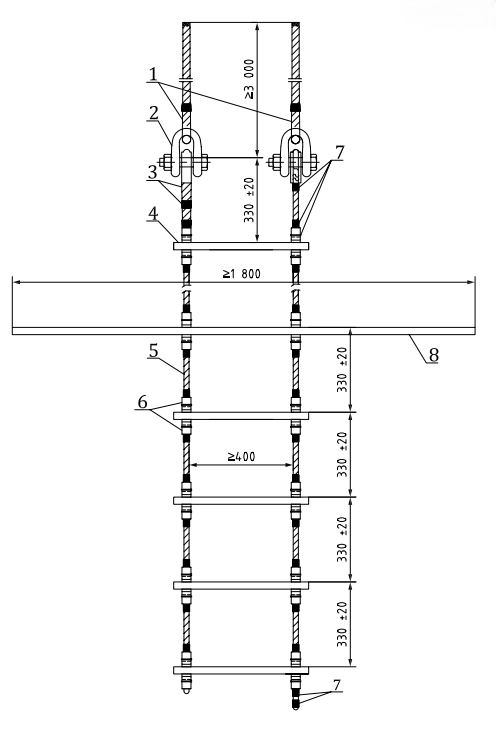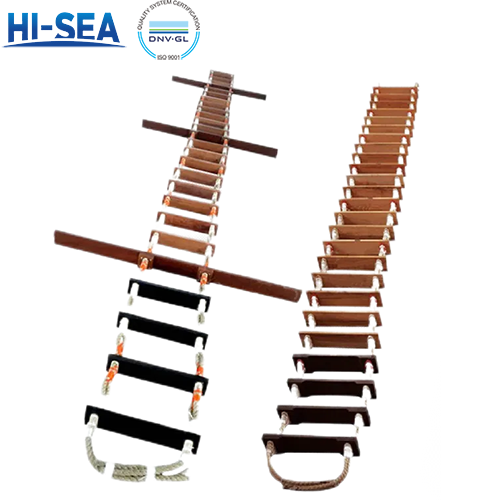
What Are Differences Between Embarkation Ladder And Pilot Ladder?
The approval standards for embarkation ladders and pilot ladders are different.
-Embarkation ladders comply with MSC.48 (66) International Life-saving Appliance Code and ISO548-2008 Ship and Marine Technology - Embarkation Ladders.
-Pilot ladders comply with IMO.A.1045 (27) Pilot Transfer Device and ISO799-1:2019 Ship and Marine Technology - Pilot Ladder.
Overview
The requirement difference between embarkation ladder and pilot ladder is mainly reflected in the following aspects:
Appearance: The four steps at the bottom of the pilot ladder are made of rubber with sufficient strength and stiffness, and the fifth step must be spreader step with a length of at least 1.80m to prevent the torsion of the ladder, and the distance between the spreader steps is not more than 9 steps. The embarkation ladder steps are made of hardwood. There is no special requirement for the bottom four steps, and there is no need to set the transverse spreader step.


Specifications: The length of the pilot ladder step is not less than 400MM between the side rope, and the length of the embarkation ladder pedal is not less than 480MM.
Spacing: The spacing of adjacent steps of pilot ladder is 310MM-350MM, and the spacing of adjacent pedals of embarkation ladder is 300MM-380MM.
Side rope: The diameter of side ropes of pilot ladders should be 20 mm (63 mm circumference). The diameter of side ropes of embarkation ladders should be 20 mm to 22 mm (63 mm to 69 mm circumference).
Length: When the freeboard of the ship exceeds 9M, the pilot ladder is required to be provided with a combination of accommodation ladder and pilot ladder, and the accommodation ladder should be set towards the stern and close to the side of the ship, with a maximum gradient not exceeding 45°. The length of a single embarkation ladder extends from the deck to the lightest sailing waterline in all cases where the ship is trim to 10° and any one side to 20°.





